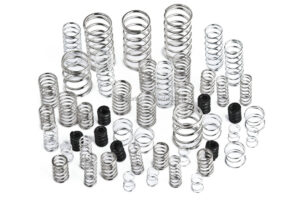Understanding the Different Types of Compression Springs

Compression springs are one of the most commonly used types of mechanical springs, and they are used in a wide range of applications. They are designed to resist compressive forces and return to their original length when the force is removed. In this article, we will take a closer look at the different types of such springs and their unique characteristics.
Types of Compression Springs:
1. Open-Ended Compression Springs:
Open-ended compression springs are among the most common springs. They are made with a gap between the coils, which allows them to compress fully when a load is applied. These springs are ideal for applications where a large amount of force needs to be absorbed.
2. Closed-Ended Compression Springs:
Closed-ended compression springs, also known as ground ends, are designed to provide a solid support base for the load. Unlike open-ended springs, they have a flat surface at the end of each coil. This type of compression spring is ideal for applications where the spring needs to be fixed or attached to a surface.
3. Conical Compression Springs:
Conical compression springs are designed with a cone shape, and they are often used in applications where a large amount of deflection is required. They are ideal for applications where the spring needs to be compressed to a smaller size, as they provide a greater amount of deflection than other types of compression springs.
4. Hourglass Compression Springs:
Hourglass compression springs are designed with a narrow center section and larger end coils. They are ideal for applications where a large amount of force needs to be absorbed over a small distance. They are often used in applications where the spring needs to be compressed to a specific point.
5. Barrel Compression Springs:
Barrel compression springs are designed with a cylindrical shape and a constant coil diameter. This type of compression springs are ideal for applications where a consistent and even amount of force needs to be applied. They are often used in applications such as shock absorbers and vibration dampeners.
Conclusion:
They are a critical component in many mechanical systems, and understanding the different types of compression springs is essential for selecting the right spring for a given application. Whether you need an open-ended, closed-ended, conical, hourglass, or barrel compression spring, each kind has unique characteristics that make it ideal for specific applications. By understanding these differences, you can ensure that your mechanical system functions optimally and reliably.






